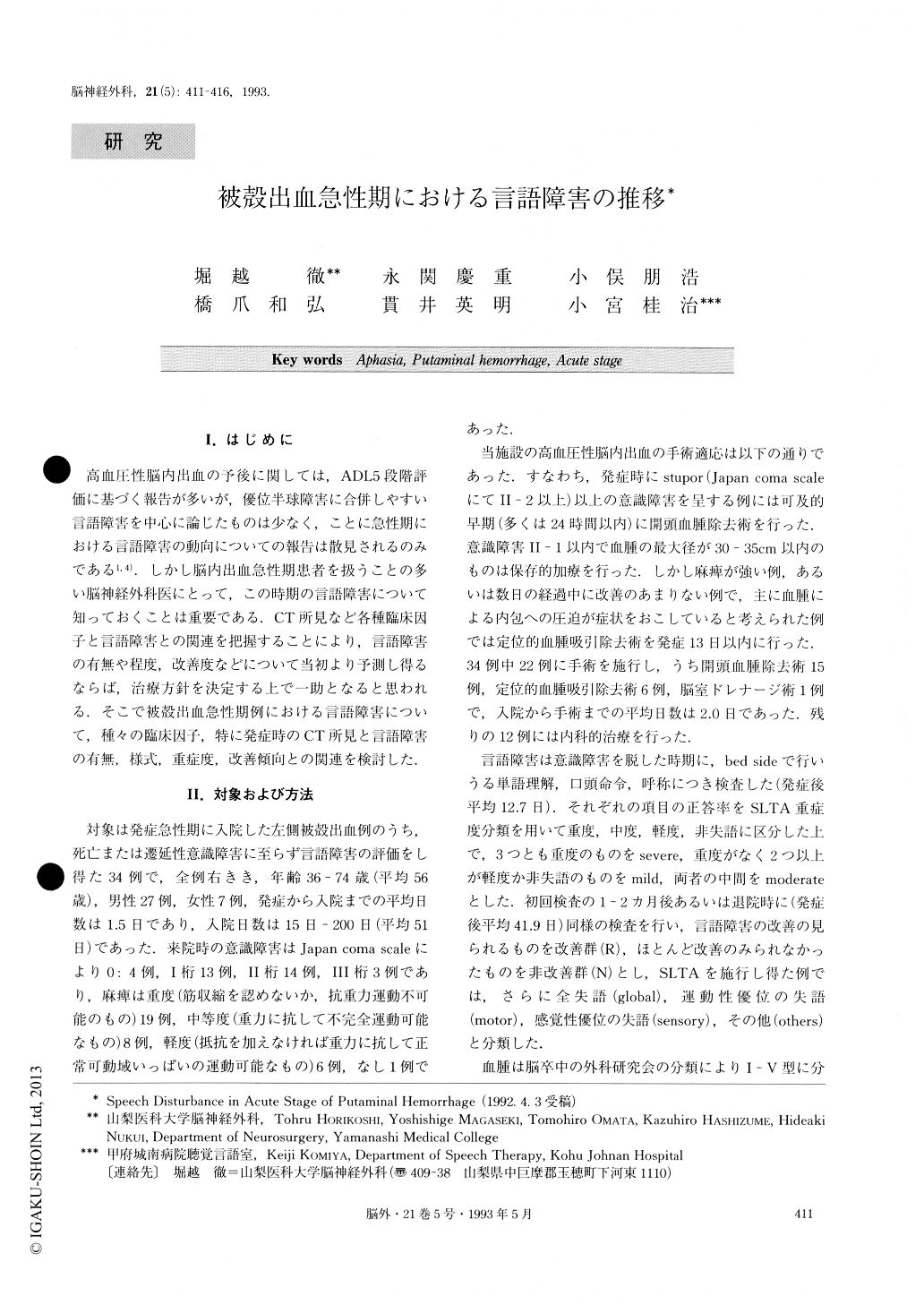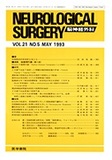Japanese
English
- 有料閲覧
- Abstract 文献概要
- 1ページ目 Look Inside
I.はじめに
高血圧性脳内出血の予後に関しては,ADL5段階評価に基づく報告が多いが,優位半球障害に合併しやすい言語障害を中心に論じたものは少なく,ことに急性期における言語障害の動向についての報告は散見されるのみである1,4).しかし脳内出血急性期患者を扱うことの多い脳神経外科医にとって,この時期の言語障害について知っておくことは重要である.CT所見など各種臨床因子と言語障害との関連を把握することにより,言語障害の有無や程度,改善度などについて当初より予測し得るならば,治療方針を決定する上で一助となると思われる.そこで被殻出血急性期例における言語障害について,種々の臨床因子,特に発症時のCT所見と言語障害の有無,様式,重症度,改善傾向との関連を検討した.
Speech disturbance was evaluated in the acute stage of 34 patients with left putaminal hemorrhage. Twenty-two patients were surgically treated and 12 were medi-cally treated. Word cognition, naming, and obedience toverbal command were evaluated according to the STLA severity grade, and speech disturbance in the acute stage was classified as 10 severe cases, 13 moderate cases and 9 mild eases. Severity of speech disturbance was correlated to severity of hemiparesis, volume of hematoma and extension of hematoma. The cases with hematomas extending to the corona radiata showed se-vere speech disturbance. At the time of re-evaluation about one month after the initial evaluation, 13 cases showed improvement of the disturbance to some ex-tent, but 19 cases showed no improvement. The im-provement was related to severity of initial speech dis-turbance, type of hematoma and volume of hematoma. The hematomas whose volumes were over 30ml were related to poor recovery. However, the cases with hematomas extending to the posterior part of the coro-na radiata showed poor improvement even though the volume was less than 30 ml.
In conclusion, these clinical factors, especially the de-gree of hematoma extension shown on CT scan, are useful for diagnosis and evaluation of speech disturb-ance in putaminal hematoma.

Copyright © 1993, Igaku-Shoin Ltd. All rights reserved.


